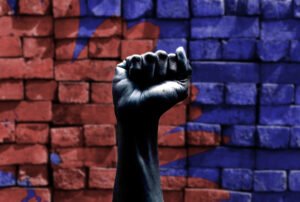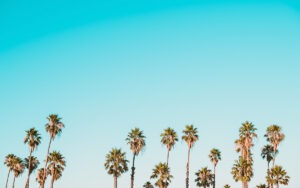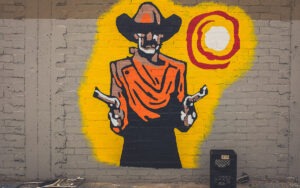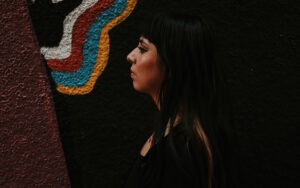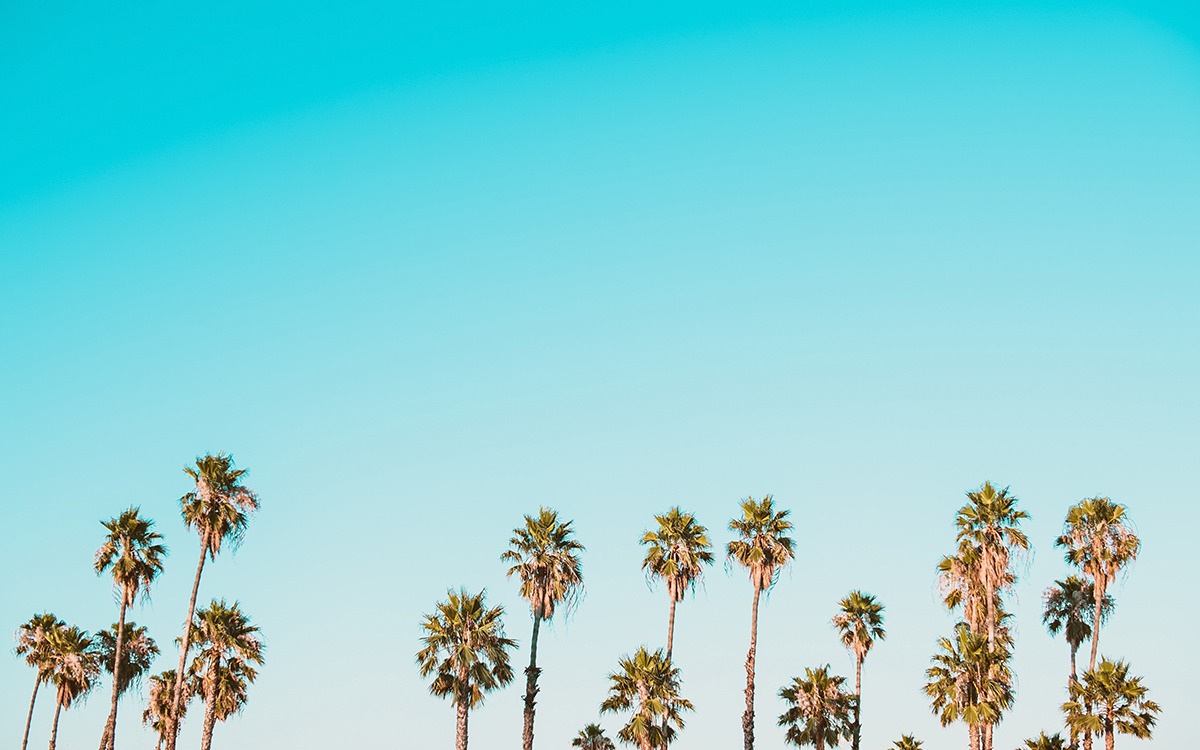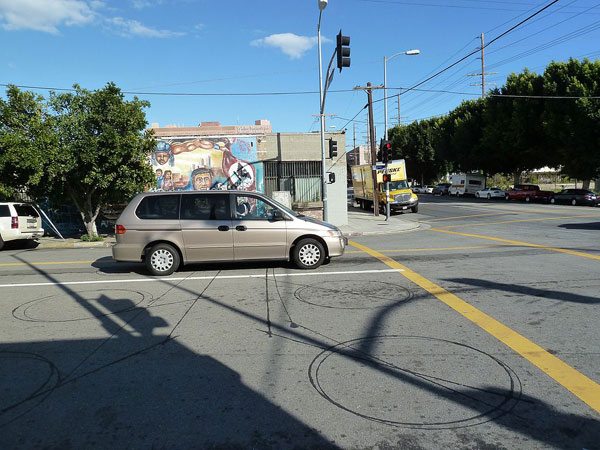
November 4, 2017; CBC News
Boyle Heights, as CBC (Canadian Broadcasting Corporation) reporter Kim Brunhuber notes, is a traditional “center of [Latinx] culture in Los Angeles” while Crenshaw has a similar stature in Los Angeles’s Black community. Now, Brunhuber notes, “with property and rent prices going up across Los Angeles, people with money—most of them white—are being drawn to formerly undesirable neighborhoods [of color] where residents fear their culture will be erased.”
Brunhuber quotes at length from University of Southern California sociology professor and demographer Manuel Pastor. Pastor begins:
“It kind of has the resonance of Columbus discovering America.… That is, a newcomer sort of not understanding there was actually a thriving population already existing in the area and thinking that this is a barren wasteland on which to build something new.”
Pastor says the biggest factor driving these demographic changes has been the redevelopment of downtown Los Angeles.
“If we had been talking 15 years ago, there were about 5,000 people living in downtown L.A., most of them homeless,” Pastor says. “Now it’s about 75- to 80,000 who are living in downtown Los Angeles. First come the artists, then the art galleries, then come the young urban professionals with money to price others out.”
The impact has been dramatic. In Boyle Heights, Brunhuber writes, “Many of the mariachis have left the area because they can no longer afford the rent. A new art gallery and the new coffee shop are already here. In less than three years, there’ll be new bike lanes, a new public arts space and a pedestrian mall. Even part of the plaza itself is now for sale. Change, say residents like José Sánchez, has been slow but expensive, like the $5 pour-over coffee.”
Meanwhile, in Crenshaw, a new light rail line, a new mall, and a new housing development are planned, but residents are angry, showing up at public meetings in the hundreds. As resident Michael Beatty points out, the promotional brochures the developers have printed make it clear who they expect to attract into the new housing; many of the faces are not Black.

Sign up for our free newsletters
Subscribe to NPQ's newsletters to have our top stories delivered directly to your inbox.
By signing up, you agree to our privacy policy and terms of use, and to receive messages from NPQ and our partners.
“Crenshaw is the last bastion of African American concentrated density in population in Los Angeles,” Beatty says. “We have businesses here. We have families who have been here a long time.”
Deirdre Hardimon, who is from one of those families, says she’s concerned because she’s seen gentrification elsewhere in the city. “I see non-black people moving into areas that are historically Black,” Hardimon says. “They didn’t want to be there 10,15, 20 years ago, but now they have no place else to go because the real estate is so high in Los Angeles.”
Beatty says he fears that “the diversity that you would expect in this community, with all the black and brown people, will slowly…turn into an essentially a white community.”
The CBC ends its story with a shrug that could be summarized as “displacement happens.” But read the local press, and the story grows more complicated. In Crenshaw, Kahllid Al-Alim, president of the Park Mesa Heights Community Council, tells Elijah Chiland of Curbed Los Angeles that the rail line being built could help the area if residents are given the chance to benefit from it. Al-Alim is pushing for local hire policies on construction and support for local small business owners. Chiland adds:
For Al-Alim, a major frustration is the feeling that local leaders don’t want to listen to members of the community when planning projects like the Crenshaw/LAX Line and future developments in the area. “We’ve been asked enough,” he says to Chiland, “it’s just that our voices have not been incorporated into the plan.”
In Boyle Heights, the tactics used have included harassing visitors of a new art gallery; owners of that gallery shut their doors last February. CityLab’s Natalie Delgadillo says that despite displacement pressures, Boyle Heights “remains a firmly [Latinx], working-class neighborhood, managing to preserve its identity even as surrounding neighborhoods…rapidly gentrify.”
Pushing an art gallery out, however, is one thing. Building something more inclusive is far more challenging. “The more complicated work,” notes Delgadillo, is “deciding what kinds of businesses should be allowed to make their way into the neighborhood. There is a housing shortage in Boyle Heights…and unemployment is at 8.6 percent, above the city median. How do you allow investment without encouraging population change and displacement?”
Angel Luna, a resident and activist, says neighbors support development, but housing must be affordable and displacement avoided. “We want things like…a new laundromat on the corner of Whittier and Boyle. We want our streets and sidewalks fixed,” says Luna. “We shouldn’t have to wait until white people live here for someone to care enough to fix the sidewalks.”—Steve Dubb


